Developing routines with our students not only makes the most of our instructional time, but they add structure to our students’ daily activities. Students know what to expect and how to do what is expected. In this post, I’ll explain my weekly phonics routine in second grade and the reasons why having a consistent routine has been so beneficial to my students.
Why I use a weekly phonics routine in second grade
Consistency is key.
The consistent repetition and reinforcement that happens when you design a routine that works for your students, will yield significant gains in their progress. Giving students similar activities each week, in the target pattern they are working on, saves time, prevents you having to explain new activities each week, and fosters student independence. I find students are more engaged, participate more, and get started right away when they know the routine and what’s expected.
Modeling is a must.
Because the connection between letters and sounds is not always readily apparent, modeling how to blend sounds, build words, and decode is an important part of our daily phonics routine. As we transitioned to structured literacy and science of reading aligned instruction, we implemented word mapping to help students connect letters to sounds.
Daily practice makes perfect.
My phonics routine consists of short, daily mini lessons that I’ve made on PowerPoints, with time for practice in reading and writing built in. We typically spend no more than 15-20 minutes daily on the mini lesson, a whole group practice game, and a quick independent practice activity.
Students can apply their learning in a variety of ways.
With a consistent, daily phonics routine, students can apply the phonics patterns they’re learning in different ways each day. Below is the routine I use and the different skills students’ practice and apply throughout the week.
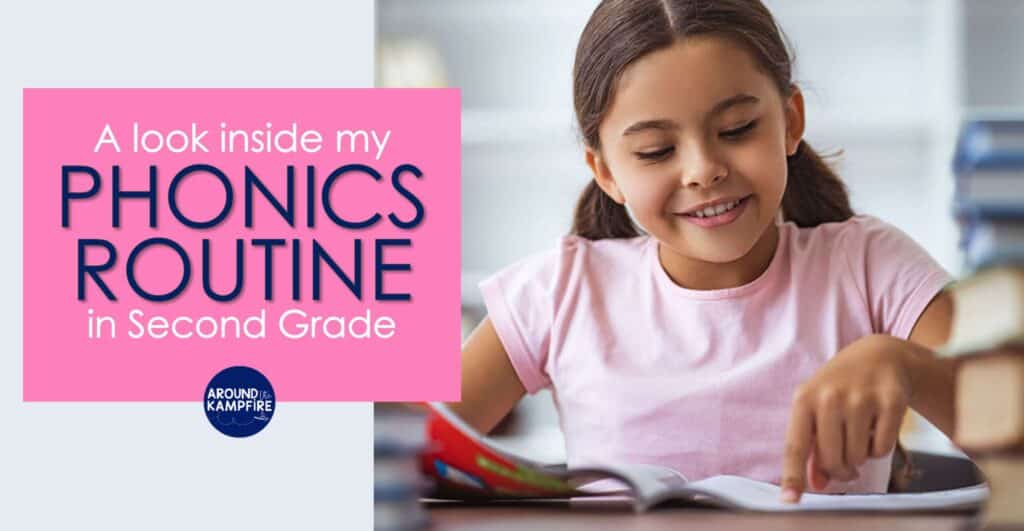
My weekly phonics routine
Monday: Introduce the phonics pattern & blend
On Monday, I use mini lessons on PowerPoint to introduce the phonics pattern and its rule. I’ve made PowerPoint for each pattern with interactive practice slides that have moveable letter tiles for me to model building words, blending sounds, and play practice games.
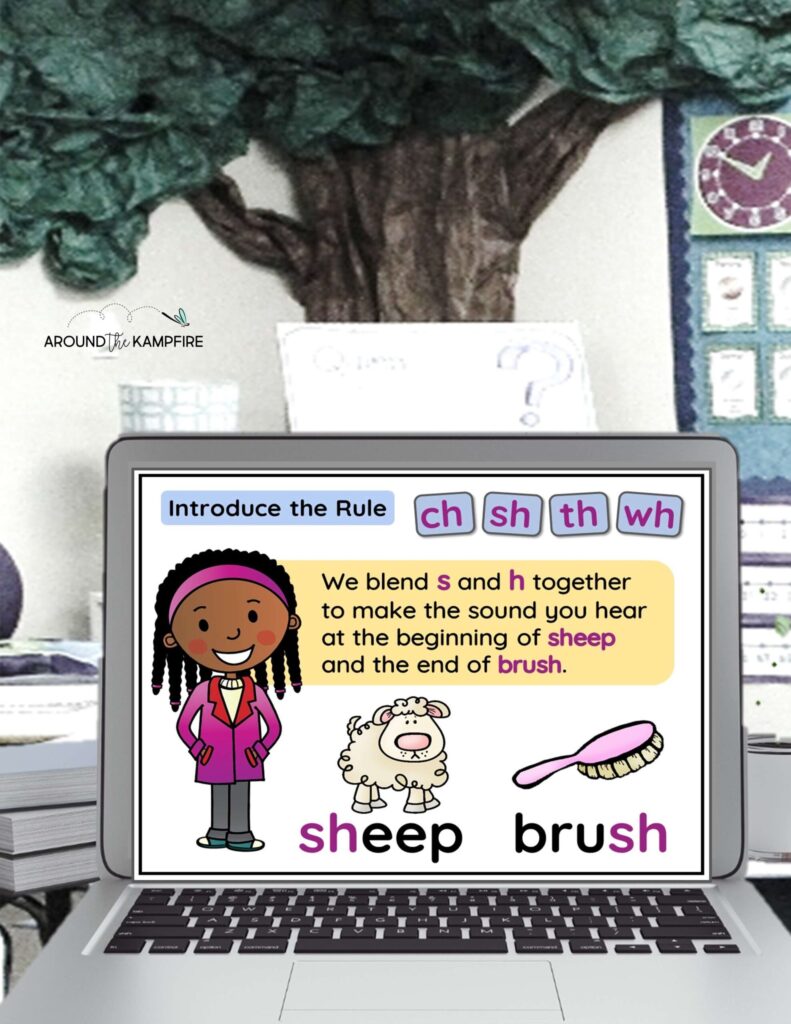
Tuesday: Word building
For our Tuesday whole group mini lesson, I project word building slides with moveable letters for students to make words. I call on students to come to the board to slide tiles and build words, and have the rest of the class use white boards to write the words.
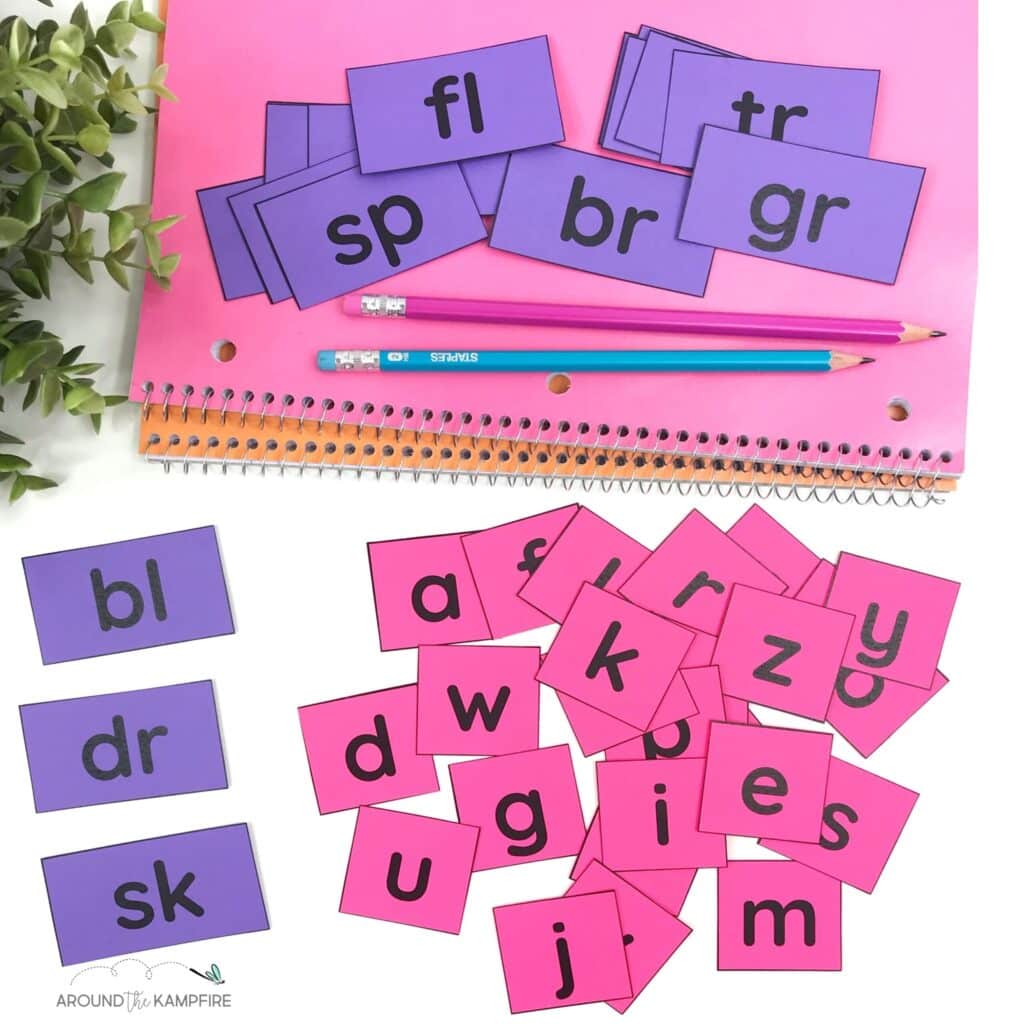
We practice word building in a couple of different ways. To have students read words I dictate the letters, and they read the word. I have students spell words by telling them a word, they segment the word into sounds, and choose the letters to represent the sounds to spell the word.
Students get further word building practice during their small group time using letter cards.
Wednesday: Dictation and spelling
By Wednesday, students have been working with the spelling patterns for a couple of days. They’ve used letter tiles or magnetic letters to build and read words and have practiced blending longer, multisyllabic words with the phonics patterns we’re working on.
To practice spelling, I made several fun game slides with hidden pictures in the target phonics pattern. Students find the pictures in the target pattern. I call on students to circle the pictures while the rest of the class writes the words on white boards.
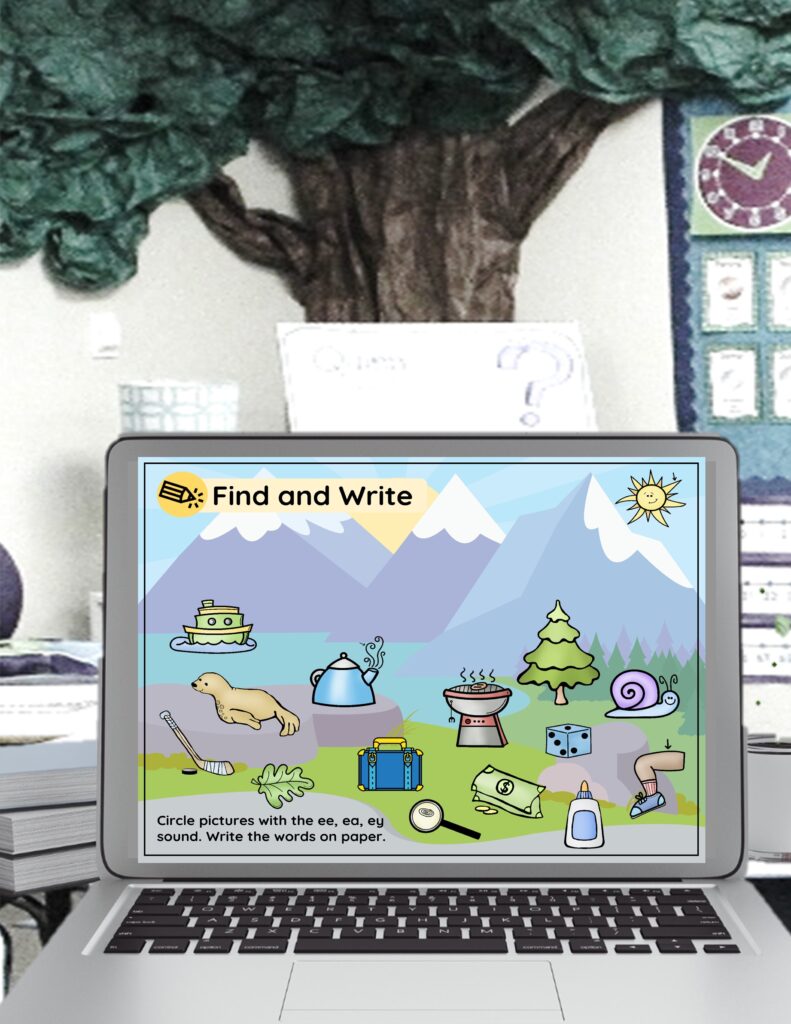
The beauty of these slides is that they do double duty. They can all be used as digital practice games that students can play again independently on tablets or computers.
Thursday: Reading decodable texts
On Thursday students read decodable phonics stories. Reading and responding to decodable texts gives them an opportunity to apply their phonics knowledge. I wrote short decodable stories, in each phonics pattern, with high frequency words that students have been taught. Each passage is followed by 2-3 comprehension questions.
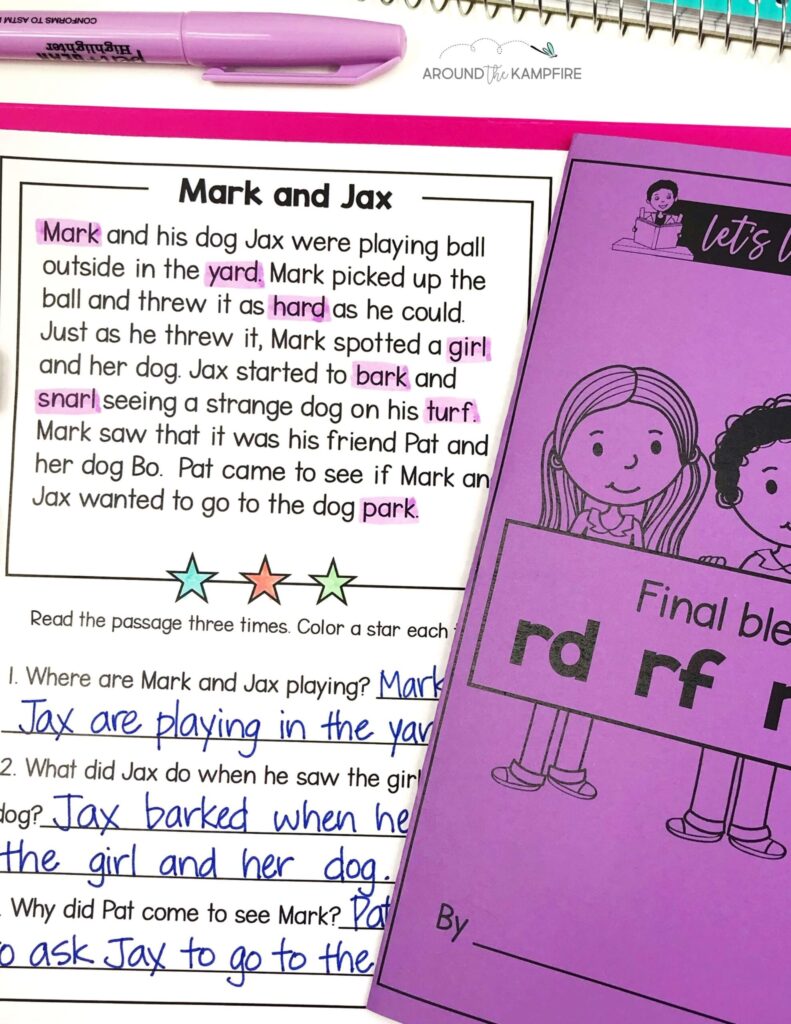
Typically I give each students their own copy to read so they can highlight words and answer the questions in writing. If we have time, I’ve included several slides in the PowerPoint with decodable sentences and transparent shapes for students to highlight words in the target pattern. Other times, I use these slides as a center for partners to play.
Friday: Assess
On Fridays, I do a quick assessment that involves writing and reading a short decodable passage and answering a question or two. Students also circle words in the passage that have the phonics pattern. I’m a big believer in keeping these Friday assessments short, simple, and easy to grade.
Our weekly phonics routine includes independent practice
Students get additional practice throughout the week in literacy centers by:
- Building words with magnetic letters or tiles
- Reading and responding to decodable texts
- Writing sentences using the target phonics/spelling patterns
- Sorting picture and word cards
- Playing digital phonics games
- Comparing sounds and listening for same or different sounds
- Practice page for homework or morning work
Are you in the process of planning your weekly phonics routine? If you don’t have time to create Powerpoints for all your minilessons, or phonics practice pages, assessments, or center activities, you don’t have to! I’m happy to share the resources I created for my students.
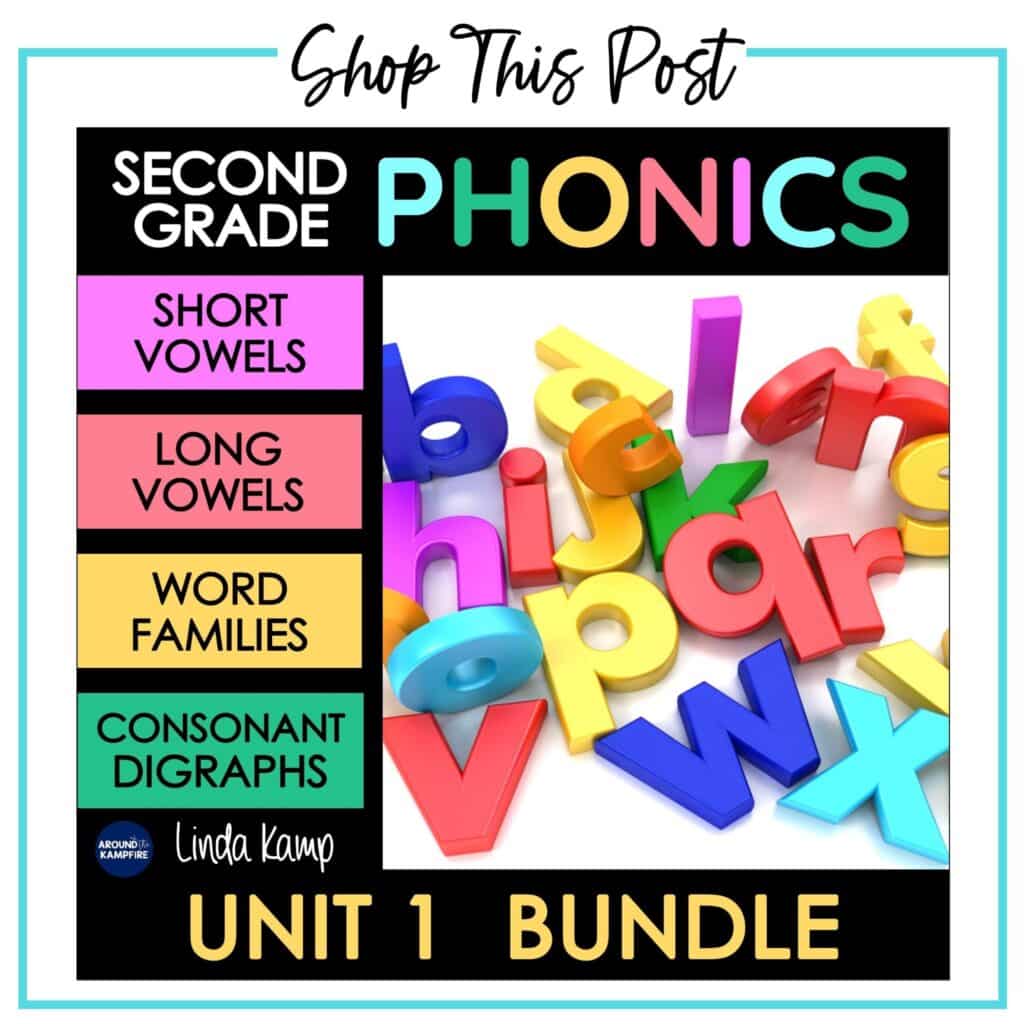
Short & Long Vowels, Word Families, Digraphs Bundle
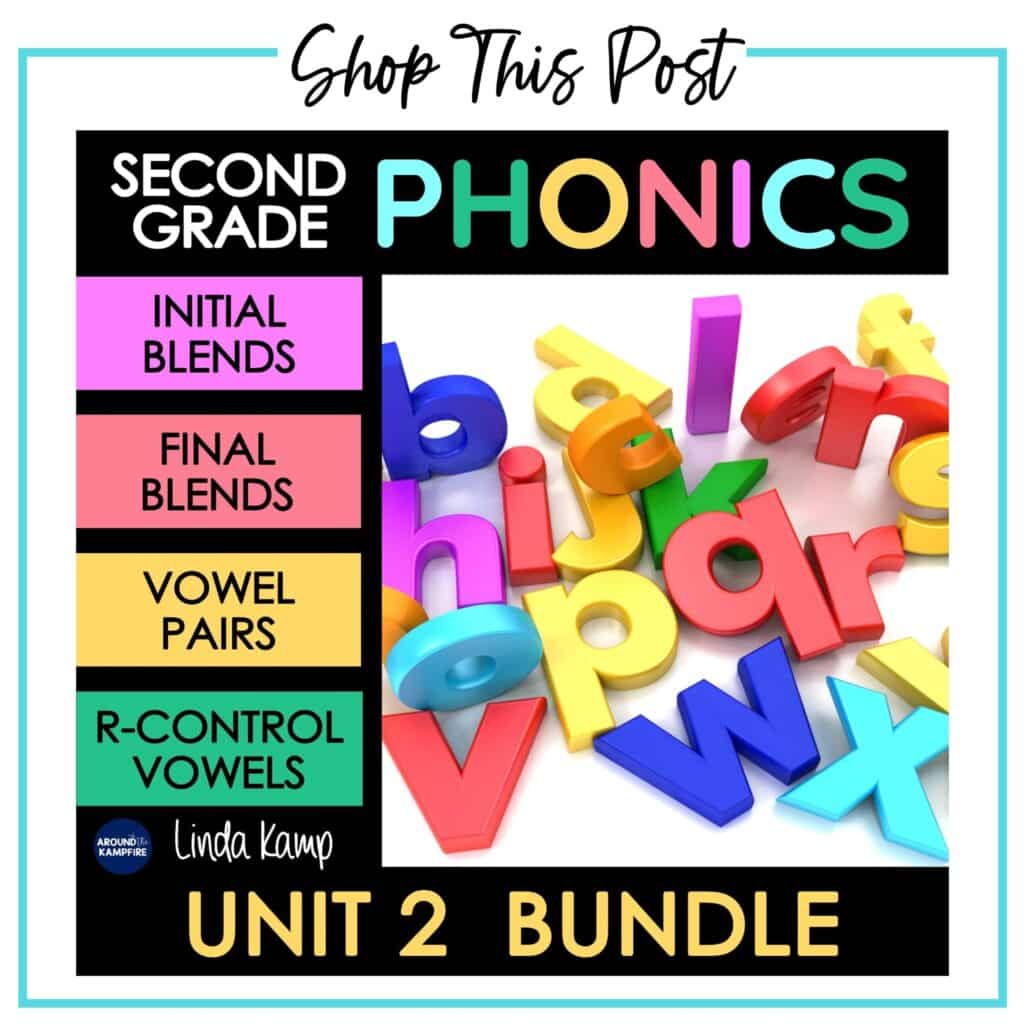
Consonant Blends, Vowel Pairs, R-Controlled Vowels Bundle
Each of these units includes everything you need to teach and assess foundational phonics skills. See all of my phonics teaching resources and centers here.
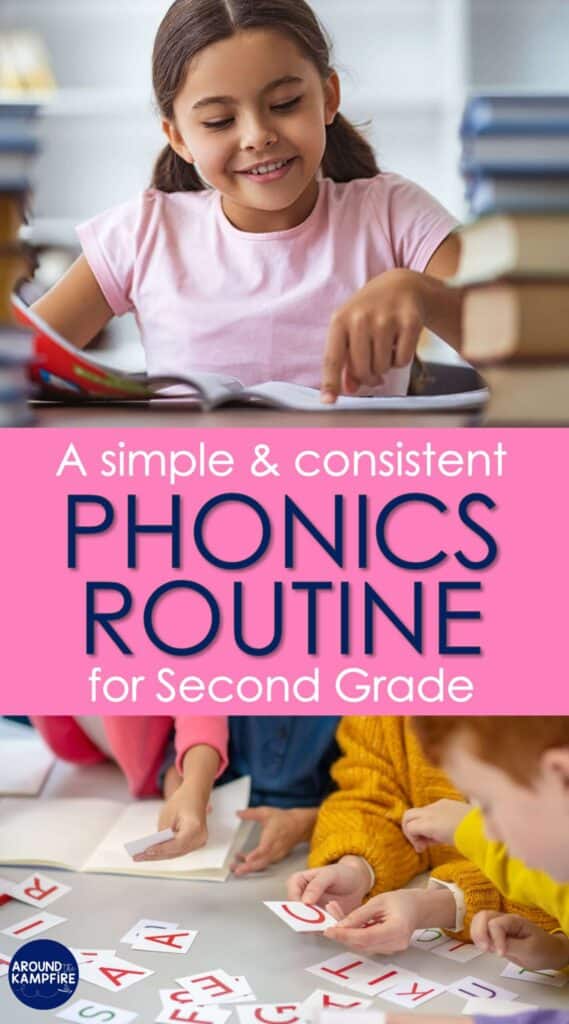
Be sure to pin this post for later so you have it when you plan your weekly phonics routine!
You may also find these posts helpful:
How to Start Centers at the Beginning of the Year
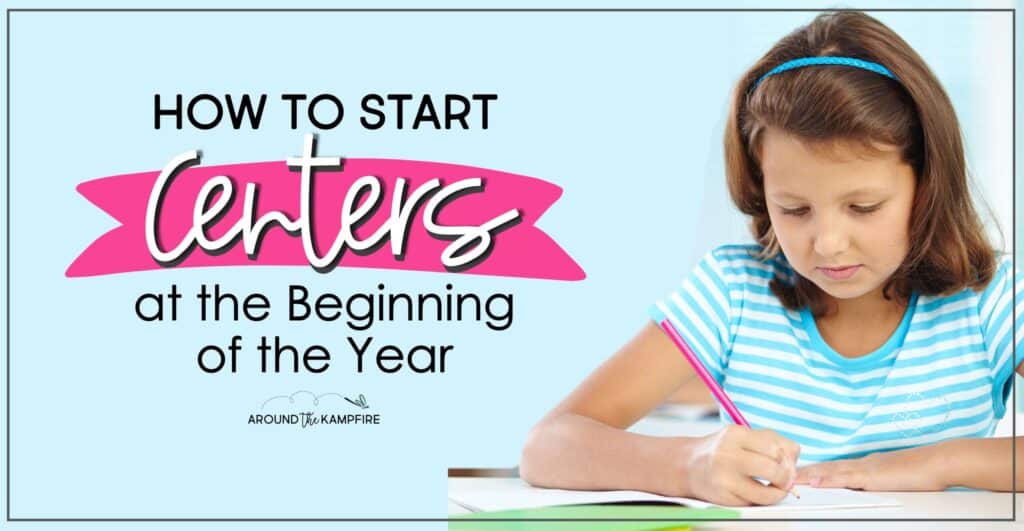
7 Secrets to Student Independence During Centers
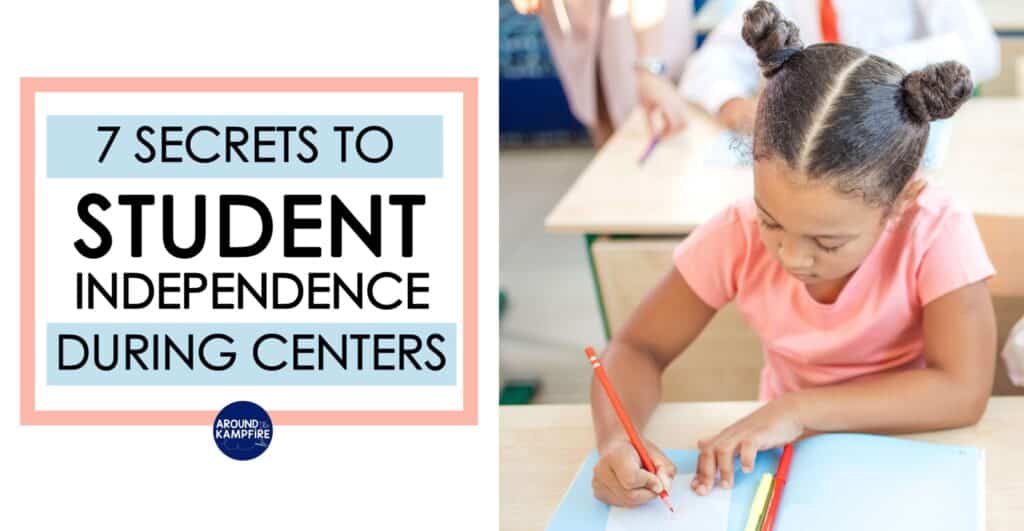
Ideas for Teaching Phonics Virtually
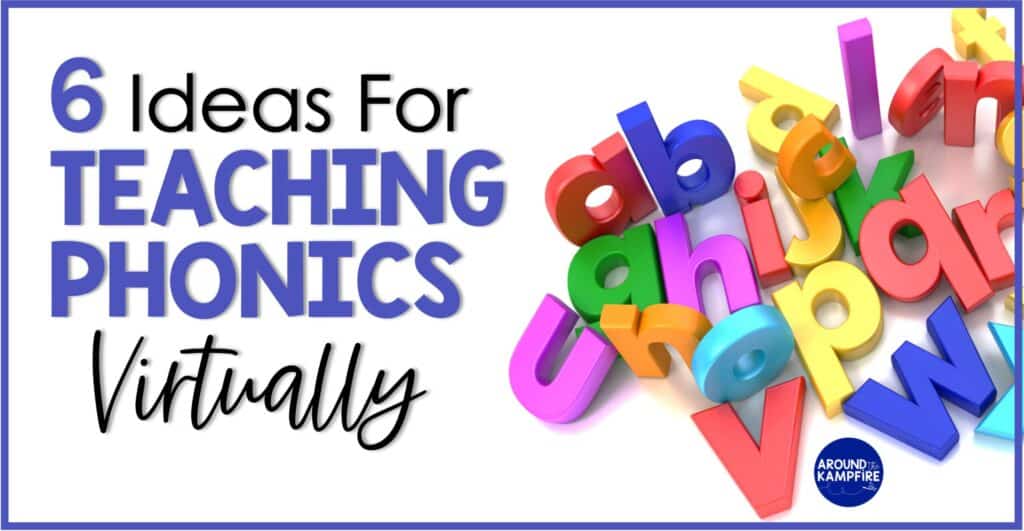
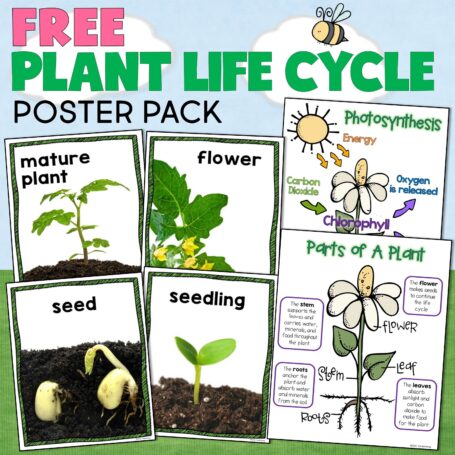
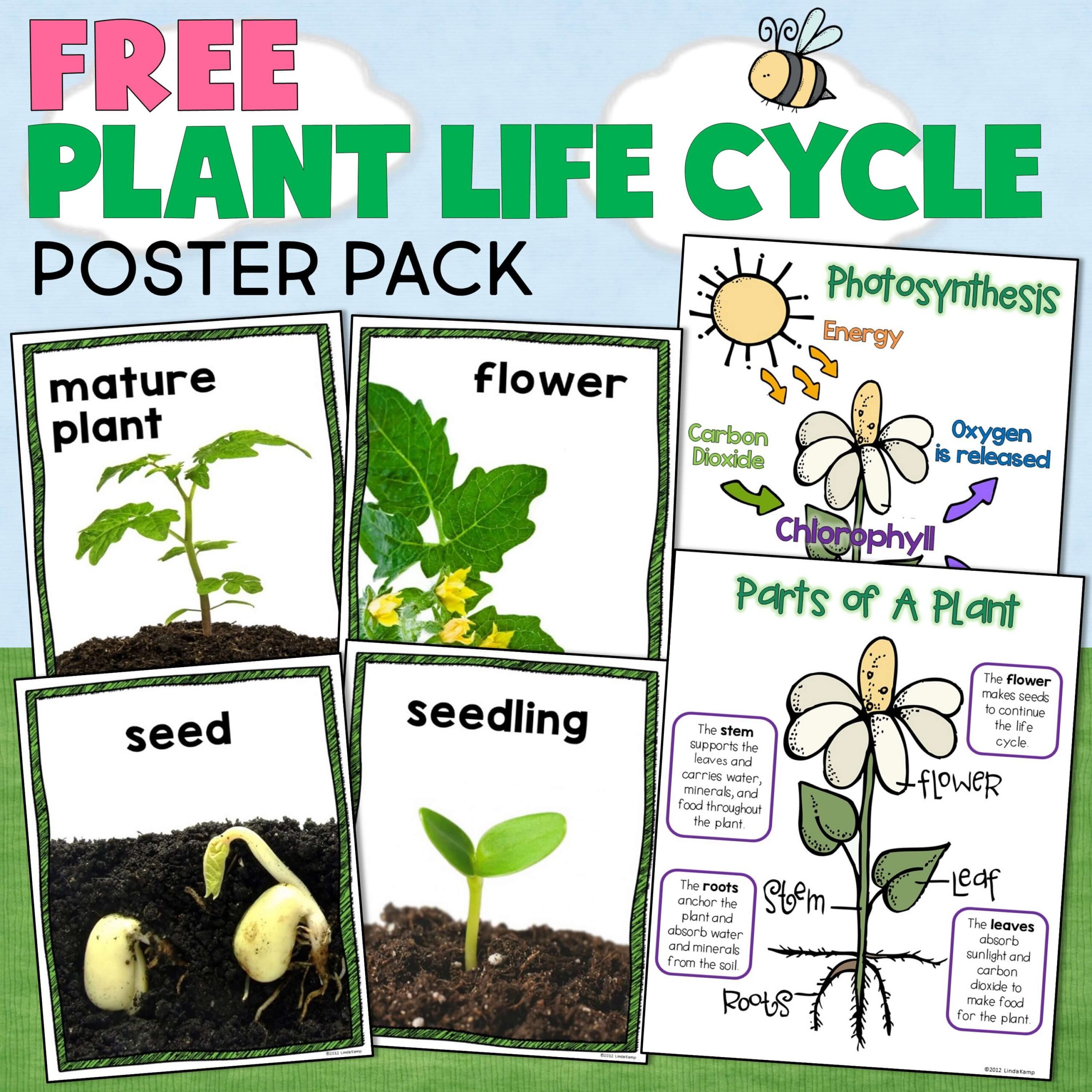
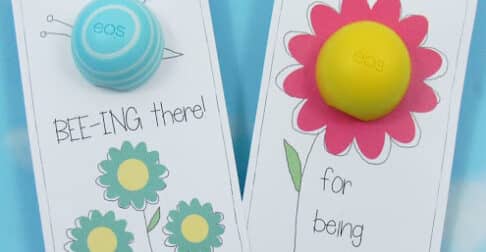
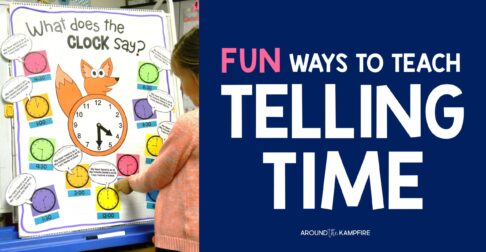
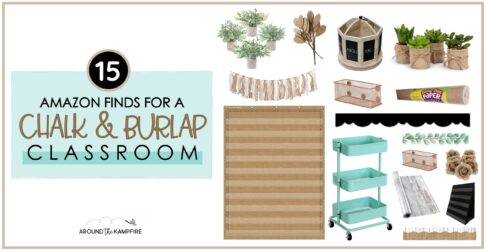

Leave a Comment